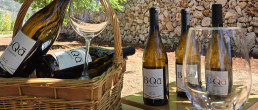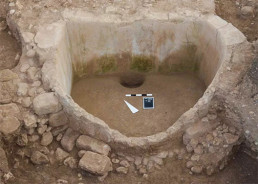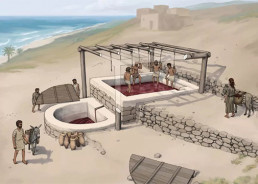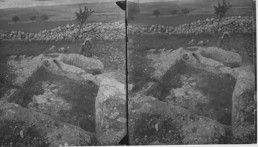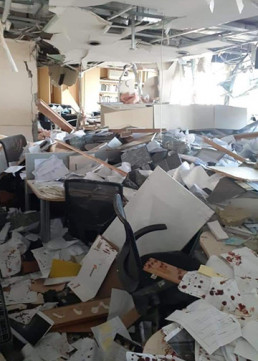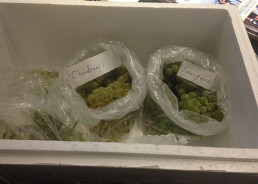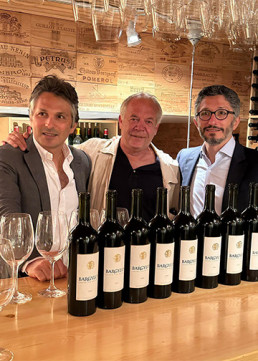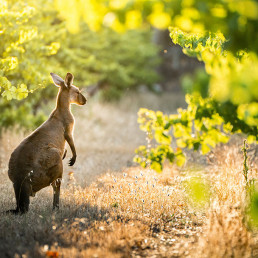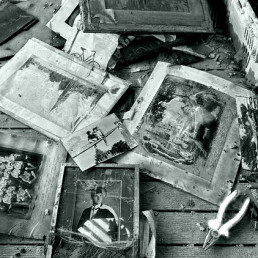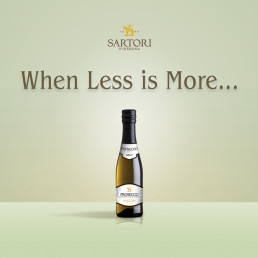“They will blossom as the vine, [and] their fragrance will be like the wine of Lebanon.”
– The Prophet Hosea (780 – 725 BC)
Wine making is, in practice, easy: grow a bunch of grapes, wait for them to ripen and harvest them for sorting, de-stemming, crushing, fermentation, transfer into preferred storage vessels and of course, a bit of waiting. Wines sometimes are filtered and then it’s bottling time. So, there you go. Easy peasy, right?
Well, that’s a “normal” version – not the version of trying to make seriously good wine in a volatile geographic region with long histories of turmoil.
The pioneering winemaking Saadé family of Chateau Marsyas in Lebanon and Domaine de Bargylus in Syria are doing just that. Facing extreme challenges daily – employee safety, operational disruptions, erratic energy supplies, kidnappings, and a wayward bomb or three! Now, the war in Gaza has given them more worries. Just recently, Israel bombed Lebanon, less than a kilometre from the Bacchus temple, not far from their vineyards. Against the odds they resolutely continue to produce these riveting rare wines worthy of seeking out here at Dhall & Nash.
The Levant Region
A historical term for the Eastern Mediterranean territories, the Levant Region encompasses the land bridge between Africa and Eurasia and includes Lebanon and Syria in it’s growing modern usage.
Seldom at the top of the list when one thinks of prosperous wine regions, this is hard to understand considering this fabled land is at the centre of Phoenecian culture and, in many respects, outdates viticulture throughout even the most established old-world sites. For thousands of years this ancient country has been toiling away creating some really special wines. And it makes sense really – wine is such a fantastic compliment for Levantine cuisine!
The Region - Lebanon
The Phoenecians (a culture credited as being the ‘original’ cultivators of the vine in many of the coveted old world sites and having an extraordinary impact on the global wine industry as a whole) were in fact centred around Lebanon. The very term ‘wine’ is said to have derived from their tongue describing the fermentation of grapes. A thriving civilisation between 1550 – 300 BC, they established many trade routes throughout Europe and the Mediterranean which they utilised to spread knowledge and skill when it comes to winemaking.
Speaking of Lebanese wine without going into religion is near impossible. Hosea (780 – 725 BC), a prophet, said unto his followers that they must return to God so that “they will blossom as the vine, [and] their fragrance will be like the wine of Lebanon” and said “his fame shall be like the wine of Lebanon” (14:8), so it is clear that viticulture was not only established in the region by this time, but idealised as well. The wedding at which Jesus Christ is said to have turned water to wine in the Christian faith took place in the land of Canaan, which in Modern times would be in southern Lebanon.
Despite a history rich in viticulture and culture, the modern political situation in the country has for some time made it difficult to sustain the industry. Wars and conflict plaguing the region have made it difficult in many areas to thrive. In the last couple of decades however, there are whispers of a ‘renaissance’ for this original player. In the last 20 years, the number of wineries in the Bekaa valley has increased from 5 to 35, and this endurance and determination is a trend that many expect to continue. Lebanon boasts a very dry climate with around 300 days of sunshine a year. Coupled with chilly nights, the grapes benefit from a long growing season and the perfect conditions to grow thick skins and develop fantastic concentration.
The Region - Syria
Syria’s wine culture is almost as old as its capital: Damascus was established in the 8th millennium BC and is one of the oldest continuously inhabited places of mankind. Furthermore, the oldest preserved wine relic in the world was found not far from it: a grape press, dated to a period around 8,000 BC.
The scholar Pliny the Elder (*23 o.24 to 79 A.D.) mentioned Mount Bargylus six millennia later in his work ‘Naturalis Historia’ and described it as ‘a massif mountain running parallel to the Mediterranean coast’. This is the oldest fully preserved systematic encyclopaedia. And grapes grew densely over its slopes during the Greek-Roman period.
Later on, it was the Christian Orthodox monks who systematically cultivated the wine in Syria, which of course was not particularly widespread. And the amount of current wineries in the country is still unknown. Syria lies at the eastern extremity of the Mediterranean winelands. The highest profile and only known commercial winery in the country is Domaine de Bargylus in the Latakia province on the slopes of the Coastal Mountain Range (Mount Bargylus) to the north of Lebanon. These mountains, known as Mount Bargylus in the Hellenistic and Roman periods, produced notable wines up until the rise of Islam, when most growers transitioned to selling table grapes rather than wines.
The Geo-Political Situation
Let’s look at a bit of background first. 2020 was a catastrophic year for Lebanon, even without the ongoing trauma and economic damage wrought by the Covid-19 pandemic. Then there was a massive warehouse explosion on the 4th of August that rocked Beirut’s port, killing more than 200 people, injuring thousands and leaving over 300,000 homeless.
At the time of the blast, the Saadé brothers, their father and several managers of the Château Marsyas winery team were in their commercial offices nine stories up and just 600 metres away from the explosions. They crawled through debris from fallen walls and ceilings to escape. Although Sandro and Johnny Saadé Sr. were hospitalised with injuries, they continued to conduct business from their hospital beds. Then, less than two weeks later, they were back harvesting grapes at their vineyards in Lebanon’s Bekaa Valley. “The grapes don’t wait,” explained Sandro. “We had harvest and at the same time we were at the hospital. We transformed [our father’s] hospital room into an operational room for the harvest”. That is the kind of resilience winemakers have in this tiny country on the eastern Mediterranean coast. “In Lebanese wine, perseverance is part of the terroir,” explains Wine Spectator.
With inflation nearing 150%, and the value of the Lebanese pound spiralling downwards, the cost of all wine-related imports has risen exponentially. Local wine demand has also been impacted by the collapse in living standards, Covid-19 and the evaporation of Beirut’s once-famous night-life culture.
While the blast may have knocked the stuffing out of the Saadé offices and left them battered and bruised it doesn’t seem to have dented their resolve in the slightest.
“The only way to go is to persevere and build” recounted Karim to Drinks Biz. “It did not discourage us, we’re very determined and we will continue to make wine in these difficult times.”
The Saadé Family
Originally from the coastal city of Latakia in Syria, for the past three centuries the Saadé family has been involved in agriculture as one of the largest landowning families in the country.
All their family assets were then confiscated in the 1960s during Nasser’s presidency when both Syria and Egypt were united for slightly less than two years. The Saadé family work ethic is a continuing legacy of strength with great-great grandfather, Gabriel Saadé (1854-1939) being instrumental in reforming olive tree plantations in coastal Syria. Whilst Rodolphe Saadé (1900-1956) was a prominent industrialist.
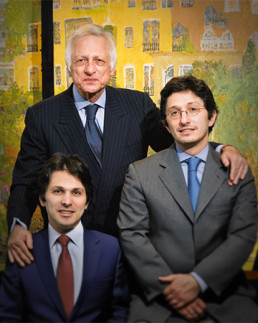
The Saadé family has always drawn from its strong Levantine roots and has a passion for challenges among which is the renaissance of the ancient vineyards of their homeland. It was Johnny R. Saadé, Rodolphe’s son, himself a successful businessman, who always dreamed of returning to the family’s agricultural roots through the creation of vineyards in Lebanon and Syria, but even before the Syrian war, it was an ambitious project.
“It’s an act of resistance,” says Karim Saadé. “At the same time, it is a symbol of perseverance, and the fact that we are there, and we’re going to stay there.”
With the help of a world-renowned oenologist from Bordeaux, Stephane Derenoncourt, they found an area with interesting soil and climate in the coastal mountain range of Jebel Al-Ansariye – known as Mount Bargylus in ancient Roman times, when vineyards were still plentiful.
“The primacy of the soil and uncompromising quality” is how Karim and Sandro Saadé define their winemaking philosophy. This approach, unlike many local practices, is aimed at raising Levant wine to the level it deserves. Proud of their roots, the brothers are reluctant to consider Lebanese wine under any ethnic label as many others have tried to do.
They had to build the winery from scratch as there was absolutely no local knowledge, “We needed to recreate the settings, the culture of wine in Syria,” says Sandro Saadé.
They hired a team from the villages around the site. “The people that work at Bargylus are really committed,” says Sandro. “We believe that it’s like a mission for us to continue, [ ] also because more than 35 families today depend on the project.” Domaine de Bargylus acts as the only source of revenue of the company’s permanent workers, all of whom live in nearby villages, where stable jobs are impossible to find.
Rockets recently hit the winery, destroying vines and equipment. “One of our biggest challenges is to keep our workers. Many of them wanted to leave the country,” Saade says which is completely understandable under these tremendously grim circumstances. Admirably, that the Saade family’s wineries are able to provide work and income for the locals where many industries have been forced to close due to the catastrophic effects of these ongoing conflicts is a remarkable feat against the odds.
“We have to keep going!”
Karim Saadé
They passionately believe that great wine is done primarily (90%) in the vineyard where they embrace organic viticulture and then (10%) in the cellar. By following this philosophy, Karim and Sandro Saadé have set very qualitative criteria such as high plantation density (6,250 plants per hectares) and a very low yield per plant (under one kg per plant) to achieve their goal. The grape varieties are generally Bordeaux and Rhône with some Cabernet Sauvignon, Chardonnay, Sauvignon and Sémillon as well. However, the wines taste nothing like their French counterparts. They have their own set of unique, spicy, herby flavours.
Karim Saadé says “Wine should be about openness, culture and curiosity.”
“For me there is sun in these wines…”
Stephane Derenoncourt, World Renown Wine Consultant
Château Marsyas Terroir
The Bekaa is a long, narrow, fertile, high-altitude valley. Geologists describe the Bekaa Valley as an alluvial plain cradled between two mountains: Mount Lebanon and the Anti-Lebanon at an altitude of almost 1000 metres. The vineyards are protected on one side from the maritime rains and on the other from the hot desert climate.
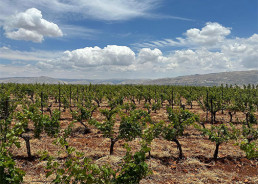
Alluvial deposits have given the land a foundation of compact limestone, bedrock covered by 40-50cm of soil. The soil is red – evidence of iron – which together with white stones forms a clay-limestone growing medium well suited to vines. It is the limestone that gives the terroir its special character and adds something to each grape varietals’ classic aromas. Here in Bekaa, the normal plum and prune flavours of the Merlot tend towards truffle. The cassis scent in Cabernet Sauvignon leans towards notes of peony. The limestone also forces the roots of the vine to reach that much deeper into the ground, in search of the nutrients it needs. This translates in the mouth as a freshness that balances the natural power of the wines.
Domaine de Bargylus
Centuries ago, wine was big business in Syria and more recently a few pioneers had tried unsuccessfully to resurrect it. The Saadé family have persevered and now own the only modern commercial winery in Syria even whilst a tragic civil war rages close by. It is no wonder that Domaine de Bargylus has been dubbed “The World’s Most Dangerous Wine”.
“It was never going to be easy,” Karim Saadé recounted in the Wine Spectator.
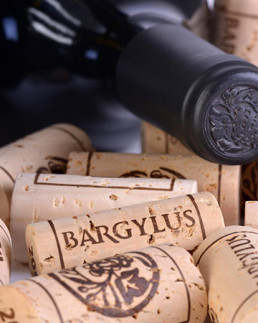
Since war broke out in 2011, the Saadé family realised the wines of Domaine de Bargylus must also be the world’s most difficult to produce due to extreme logistical headaches. For example, they need to stock a two-vintage supply of corks and bottles in case there is an embargo. Further, the actual winemaking process is essentially made over the internet with an onsite winemaker, having to post images of grapes and vines for the brothers to assess. Samples of grapes and the finished wines then must make the perilous journey to Beirut, by taxi via Syria’s northern border. Finally, to get the wine to market, it takes a circuitous route from Syria to Egypt to Beirut then onto Belgium for distribution internationally.
Their goal was always to produce premium wines that stood their ground with top Bordeaux and Rhône wines. To help fulfil their vision they brought on board the famed consultant Bordeaux vintner Stéphane Derenoncourt. He still remembers the first time he saw the foothills of Mount Bargylus. “I found it majestic. And I thought, this is where we will make some serious wine,” Derenoncourt told Wine Spectator. “The wines have balance, maturity, freshness and aging potential, with a beautiful aromatic complexity that develops.”
Works on the winery started in 2003 with the first vintage being produced in 2006. This was a red blend of Syrah, Cabernet Sauvignon and Merlot aged for 14 months in French oak, then followed by a Chardonnay-Sauvignon Blanc blend in 2007. Today, the proportion of Syrah in the red has increased to 60 percent, as the grape thrives at Bargylus where the terroir is comparable to France’s Côtes du Rhône.
The Domaine de Bargylus vineyards comprise 12 hectares at 900 metres in altitude on a plateau in the province of Latakia, northwest Syria – above the country’s largest port. The brothers believed the cooler, sea facing slopes of the Jabal Ansarrieh mountain range (Bargylus was the ancient name) could deliver a different expression of terroir to that of their successful vineyard in Lebanon’s Bekaa Valley.
The Bargylus vineyard terroir is poor clayey limestone soil but ideal for growing their Syrah, Cabernet and Merlot. With it sitting at such a high altitude the desired diurnal temperature effect and maritime influence results in maintaining aromatic freshness and a slower tannin maturation.
The Wines
The B-Qā wines are Marsyas’ ‘entry-level’ wines but originate from the same vineyards as the main Estate wines. They like to joke they’re the “reluctant” second wine or “younger brother” of the estate wines.
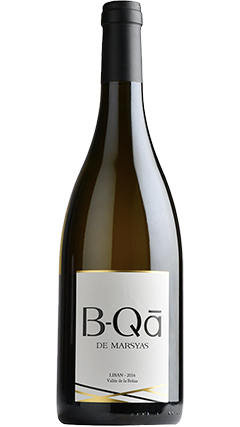
Château Marsyas
B-Qā de Marsyas Blanc 2018
In Stock (2019 On Order)
Bekaa Valley, Lebanon
A blend of sauvignon blanc and chardonnay, B-Qā de Marsyas Blanc has a clear appearance with some green reflections and exotic white fruit aromas. It has a fresh palate with an excellent acidity. The finish is long with a mineral touch.
Bob Campbell: “A creamy-textured wine with toast, melon and nut flavours. It seems quite developed but has a rustic charm… Bone-dry white wine with grapefruit, green apple, oyster shell, baked earth, and dried herb aromas.” Nov 2022
Candice Chow 18+/20: “The nose is lifting with vibrant apple, green mango, elderflower and stonefruit underlay, unfolding richness of spice and cream. Full-bodied, aromas of apple, green mango and stonefruit have a concentrated core, yellow floral, spice and chalk minerals. Vibrant acidity flows effortlessly with a creamy mouthfeel, and chalky minerals and spices contribute to the mouthfeel. This white blend features lively acidity and fruit purity and is elevated by elegant spice elements. Match with stewed chicken and game fish over the next 5 years.“ May 2022

Château Marsyas
B-Qā de Marsyas Red 2018 & 2019
(On Order)
Bekaa Valley, Lebanon
A blend of majoritively Cabernet Sauvignon and remainder Syrah and Mouvèdre, the nose is full and expressive; smoke overlays red berries, cassis and plums, along with cigars and rich spice. On the palate, hints of cherry, raspberry, blackberry with leather and chocolate. Incredibly soft and supple tannins. This is a refined and elegant wine.
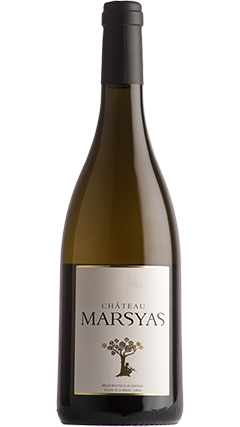
Château Marsyas
White 2017
(In Stock)
Bekaa Valley, Lebanon
An organic and unoaked blend of 70% Chardonnay, 30% Sauvignon Blanc, Marsyas white is a stunning yellow with peridot reflections. Aromas of citrus, summer flowers and cut grass. In the mouth, it is mineral, full and rounded with notes of citrus, stone fruit with a hint of nuttiness. Its structure, balance, acidity and fruit allow the wine to develop complexity years after its release.

Château Marsyas
Red 2016
(In Stock)
Bekaa Valley, Lebanon
An organic blend of 55% Cabernet Sauvignon, 20% Syrah, 10% Merlot, 10% Petit Verdot and 5% Cabernet Franc aged in French oak, 50% new, for 12 months. Fresh and soft, yet complex, including wild strawberries and spices on the nose. Very precise and elegant. Long and rich, leaving a beautiful balanced acidity.
Jancis Robinson 16.5 Points: “Unusually spicy nose. Sweet start and then gloriously off the beaten track with animal and spicy notes. Then gritty tannins on the end but masses of fruit. Really interesting! But it will probably be better when the tannins have subsided. Drink from 2023.”
Decanter, 94 Points: “From the Saade family’s beautiful vineyards in the western Bekaa. Fine nose of dark fruits with hints of menthol and liquorice. Structured and elegant in the mouth, with grippy tannins and fresh, ripe cedary fruit. Well balanced and wears its 15% alcohol lightly. Still youthful, with scope to develop further. Drinking Window: 2023 – 2030.”
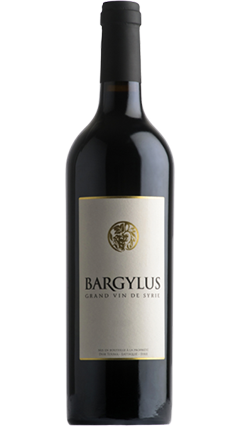
Domaine de Bargylus
Red 2015 & 2016
(In Stock)
Mount Bargylus, Syria
Syrah dominant with Merlot and Cabernet Sauvignon with a beautiful deep purple appearance. The nose expresses notes of black olives, black truffles and white pepper. In the mouth, the palate is balanced, aromatic and fresh with well integrated tannins and a touch of minerality which is typical of Bargylus wines. The finish is long and sustained with good acidity.
Jancis Robinson, 17 Points: “Still a fairly deep crimson. Heady, richly spicy nose that recalls some reds grown in nearby Lebanon. Powerful but balanced and with a streak of sweet balsamic running through it (but it’s not remotely vinegary!). Tannins nicely receded and sufficient acidity.”
Decanter: “The 2015 Bargylus red is a blend of 60% Syrah with 20% each of Merlot and Cabernet Sauvignon . It’s dark black, almost opaque. There’s incense spice and rich black fruits; the palate, though, is dry, firm, authoritative, even brooding, with prominent acidity and firm tannins – much less meltingly rich than Bekaa wines. The intensity of this fine, still-youthful red wine is almost electrifying. There have been seven vintages since, and it’s impressively consistent: more treats ahead.“
